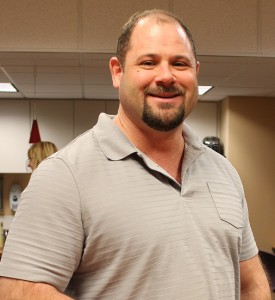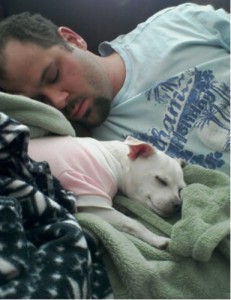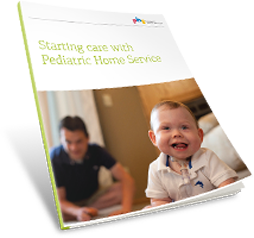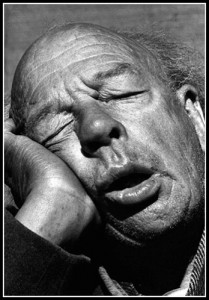Guest Post: Sleep Habits and Drowsy Driving
 Steve Erickson, CRT, RPSGT, is a Licensed Respiratory Therapist at Pediatric Home Service. Prior to joining PHS, he worked in the Special Diagnostic Sleep Lab at Children’s Hospital in St. Paul and did extensive research in the area of sleep in teenagers and the impact on learning and driving. Steve presented ‘Sleep and Drowsy Driving’ to the staff at Pediatric Home Service and turned it into a blog post so our readers can enjoy the information.
Steve Erickson, CRT, RPSGT, is a Licensed Respiratory Therapist at Pediatric Home Service. Prior to joining PHS, he worked in the Special Diagnostic Sleep Lab at Children’s Hospital in St. Paul and did extensive research in the area of sleep in teenagers and the impact on learning and driving. Steve presented ‘Sleep and Drowsy Driving’ to the staff at Pediatric Home Service and turned it into a blog post so our readers can enjoy the information.
What happens when we sleep?
Stage 1 – Between awake and falling asleep. This is a light sleep, and can be considered a transitional stage.
Stage 2 – This is the onset of sleep, and at this point you are becoming disengaged from your surroundings. Breathing and heart rate are regular, your body temperature drops, and memory consolidation and preservation begins.
Stage 3 – Stage 3 is your deepest and most restorative sleep. As your blood pressure drops and your breathing becomes slower, muscles relax and blood supply to the muscles increases. At this stage, tissue growth and repair occurs, and your energy is restored.
REM (Rapid Eye Movement) Stage – You spend about 25% of your night in this stage. It first occurs about 90 minutes after falling asleep, and recurs about every 90 minutes, getting longer into the night.
The REM stage provides energy to the brain and body and supports your daytime performance. At this point, your brain is active and dreams occur. Your body becomes immobile and relaxed as muscles are turned off.
Why is this all important?
When we sleep well, we wake up feeling refreshed and alert for our daily activities. Sleep affects how we look, feel and perform on a daily basis, and can have a major impact on our overall quality of life.
So how much sleep do you really need?
There really is no magic number. Not only do different age groups need different amounts of sleep, but sleep needs are also individual. Just like any other characteristics you are born with, the amount of sleep you need to function best may be different for you than for someone who is of the same age and gender.
What are the consequences of not getting enough sleep?
Without enough sleep, you’re putting yourself at risk for a number of health and safety concerns. You are more likely to get into motor vehicle accidents, have an increased body mass index (appetite is increased as a result of sleep deprivation), increase your risk of diabetes and heart problems, and be more likely to have psychiatric conditions including depression and substance abuse.
Want to get better sleep? Follow these tips.

-
- Establish consistent sleep and wake schedules, even on weekends.
- Create a regular, relaxing bedtime routine such as reading a book or listening to soothing music.
- Create a sleep-conductive environment that is dark, quiet, comfortable and cool.
- Sleep on a comfortable mattress and pillows.
- Keep “sleep stealers” out of the bedroom – avoid watching TV, using a computer or texting in bed.
- Exercise regularly during the day, but at least a few hours before bedtime.
- Avoid caffeine close to bedtime.
There are a number of sleep disorders. One of the most common? Obstructive Sleep Apnea.
Obstructive sleep apnea (or OSA) is a disorder where sleep is briefly and repeatedly interrupted. Sleep apnea occurs in all age groups and both sexes.
Symptoms of obstructive sleep apnea include chronic snoring, sore throat in the morning, choking or gasping for breath at night, headaches upon awakening, difficulty concentrating, feeling tired or not refreshed after sleep.
Steer Clear of Drowsy Driving
What is ‘drowsy’?
Drowsiness is red alert! Drowsiness is the last step before falling asleep, not the first. Drowsiness may mean you are seconds from a disaster.
-William Dement M.D.
Before driving, consider whether you are:
-
 Sleep deprived or fatigued (6 hours or less triples your risk of an accident)
Sleep deprived or fatigued (6 hours or less triples your risk of an accident)- Suffering from sleep loss, poor quality of sleep, or a sleep debt
- Driving long distances without proper rest breaks
- Driving through the night or when you would normally be asleep
- Driving alone or on a long, rural, dark or boring road
Good Sleep Means Better Health
Now that you know the steps to getting a good night’s sleep, potential sleep disorders to be aware of, and the risks of driving drowsy, it’s time to take steps towards maintaining good sleep habits and become more aware of your awareness level before getting behind the wheel. Happy sleeping!
Originally published: February 26, 2014



